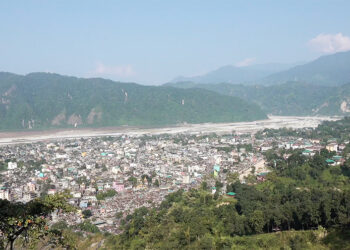 Cardamom has been the lifeline for farmers of Norjangsa in Tsirang’s Dunglagang Gewog. For over a decade, farmers have been growing the cash crop and earning decent incomes. Easy market access and better prices have encouraged them to continue growing the spice.
Cardamom has been the lifeline for farmers of Norjangsa in Tsirang’s Dunglagang Gewog. For over a decade, farmers have been growing the cash crop and earning decent incomes. Easy market access and better prices have encouraged them to continue growing the spice.
Almost all 60 households in the chiwog grow cardamom.
From a few decimals to acres of land, most farmers grow the high-quality variety cardamom locally known as ‘Barlang’. Last year alone, the chiwog produced over 18 metric tonnes of cardamom.
Local dealers are paying them between Nu 1,500 to 1,600 per kilogramme for dried cardamom.
Man Bir Tamang, one of the growers said, “The income from cardamom is enough to cover school expenses for our children and household expenditures. The spice fetches us good income if plants do not become infested.”
Prakash Gurung, another grower said, “We earn a very good income from cardamom. In the past, we relied solely on maize when there was no cardamom. Paddy didn’t thrive well here since the chiwog is at a higher altitude.”
However, with cardamom plants starting to dry up, this has raised fear among farmers.
Man Bir Tamang said “If all cardamom plants become dried up, we will have to focus on vegetables and dairy farming. But it would be difficult since wild animals destroy crops such as paddy and maize.”
Another grower Jhalak Chhetri said, “We don’t have any other income source if cardamom plants die. The leaves have already started turning yellow. We are really worried.”
Although the fear of infestation persists, the income from cardamom continues to help improve the livelihoods of farmers.
According to the Integrated Agriculture and Livestock Census of Bhutan 2025, Tsirang is one of the highest cardamom-producing districts. Tsirang produced more than 120 metric tonnes of the spice last year.
Pema Tshewang, Tsirang
Edited by Tshering Zam









